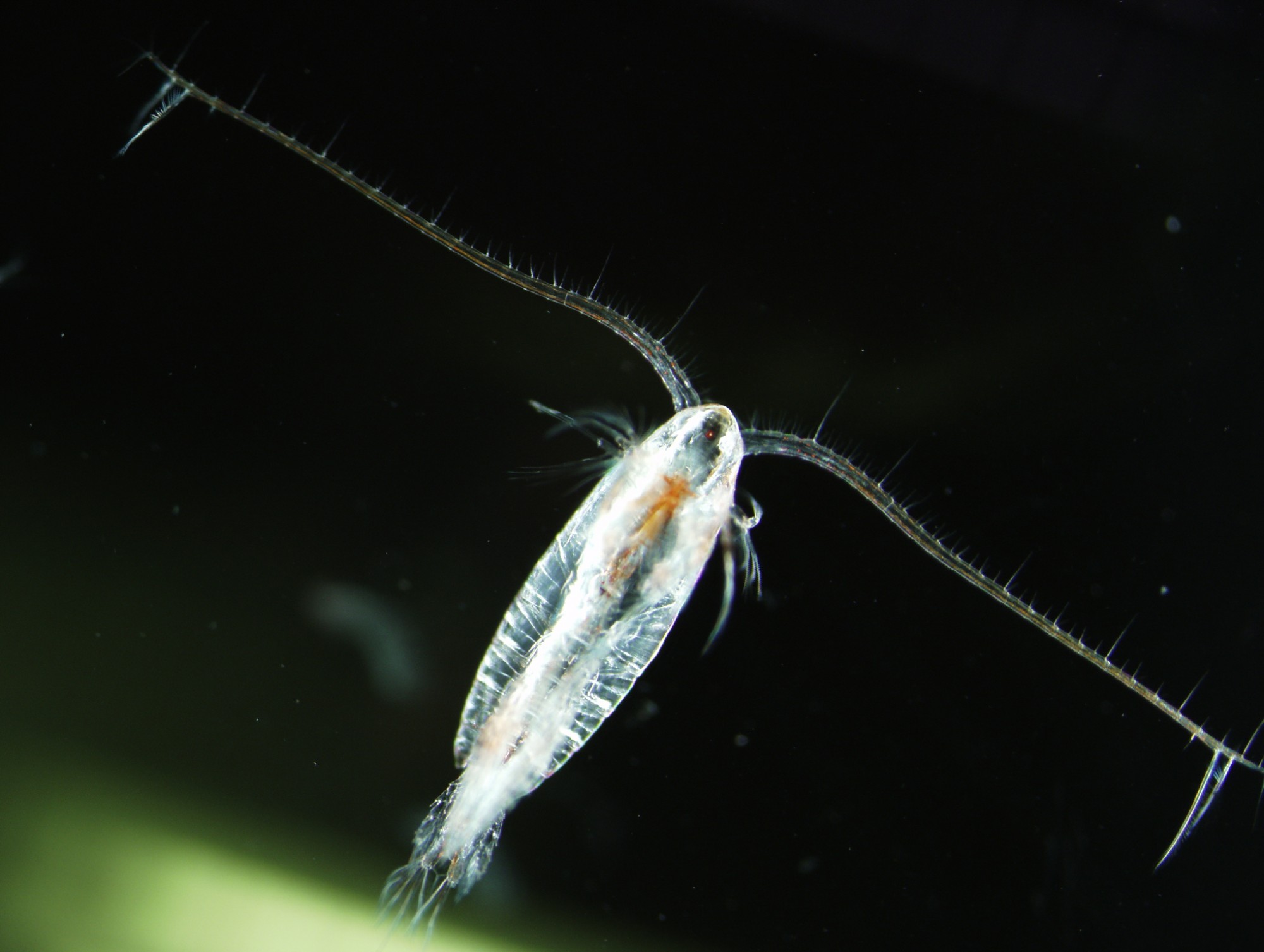
An Arctic winter tale of global warming
Text by
Sissel Rogne, Managing director, the Institute of Marine Research, Norway
Svein Sundby, scientist, the Institute of Marine Research
Frode Vikebø, scientist, the Institute of Marine Research
ADVERTISEMENT
Every winter, deep in the North Atlantic Ocean, tiny shrimp-like animals of huge importance lay dormant – waiting for a secret signal to end their long-lasting polar night. Suddenly they wake up and rise to the surface – just in time to feast on the seasonal spring bloom. The ocean is colored green, red or brown by small free-drifting ocean plants – the phytoplankton. They come in in suitable size for our tiny animals – the zooplankton – to feed on.
Perfect menu – perfect timing
The zooplankton Calanus finmarchicus belongs to one of the largest animal groups in the world when it comes to biomass, though the animal itself is no larger than 3 millimeters. The annual biomass production in the North Atlantic of this species is about 200–400 million tons; corresponding to the weight of the entire human population.
The zooplankton graze on phytoplankton, an even larger, but hardly visible marine resource. At high latitudes the phytoplankton start to grow and reproduce late winter/early spring. This strong seasonal cycle is regulated by the length of daylight. It is critical that the zooplankton wake up in time to feed on the blooming phytoplankton. Likewise, regional fish species must spawn in time for the fish larvae to feed upon the zooplankton – the perfect menu during the fish’s earliest stages.
This fine-tuned ecosystem machinery has supported us northerners since the ice sheet retreated from the North Atlantic Ocean. Traditional fisheries for cod and herring have provided food and livelihood for villages along the coast of Norway for more than a thousand years. Fisheries still contribute heavily to national and international economies and global trade. Last year Norway exported 2.7 million tonnes of seafood of NOK 99 billion. The sector depends heavily on the spring bloom booth in Norway as well as in Russian fisheries economy.
An eye-opener in the North Sea
It is still a mystery what makes these animals ascend from the deep and get ready for their reproduction. Research indicates that light may be a major trigger.
Long-term plankton observations have shown a gradual northward displacement of the Calanus species since the 1960s. At the same time, we have seen an increase in the average ocean temperatures. The finmarchicus has been gradually displaced by its southern and less nutritious warm-water cousin Calanus helgolandicus in the North Sea – “the fish pond” of northwestern Europe. The change had tremendous consequences for the ecosystem and the fisheries, and it was an eye-opener to scientists and stakeholders.
Will the southern helgolandicus progress even farther north? What will happen to the nutritious finmarchicus? If pushed northwards by global warming, the finmarchicus is not easily replaced. We risk losing a key piece of the food web puzzle at a critical moment.
Dangers luring at depth
The change in temperature is accompanied by another danger ascending from the deep ocean. Ocean acidification, gradually making water undersaturated with calcium carbonate, is an increasing challenge of a global ocean inhaling CO2 particularly in cold waters at high latitudes. The deepest level with supersaturated calcium carbonate is lifted by about 10 meters per year, and the acidification has already entered the lower levels of the finmarchicus’ winter hideout.
Acidification comes with additional costs to maintenance of life and are amplified with increasing temperatures and at high latitudes where the environment has been quite stable. How this, along with other stressors will affect the complex ecosystems and key commercial fish species is presently hard to predict. But certainly, we will experience large changes which will become increasingly challenging the longer we hesitate to act. We are facing consequences on the ecosystems that can be irreversible and with large economical changes for the coastal societies and national structures.
Three-ingredients recipe
Fish and plankton see no national boundaries. Threats to a species in one ecosystem in the ocean requires more than national solutions. Globally we have identified 66 large marine ecosystems with very different challenges and opportunities. In Arctic Frontiers, we discuss vital marine knowledge like the story told above. Well-funded advices and political will are the other ingredients in the required recipe on how to keep our oceans pristine and productive.
This story is produced by the Institute of Marine Research

